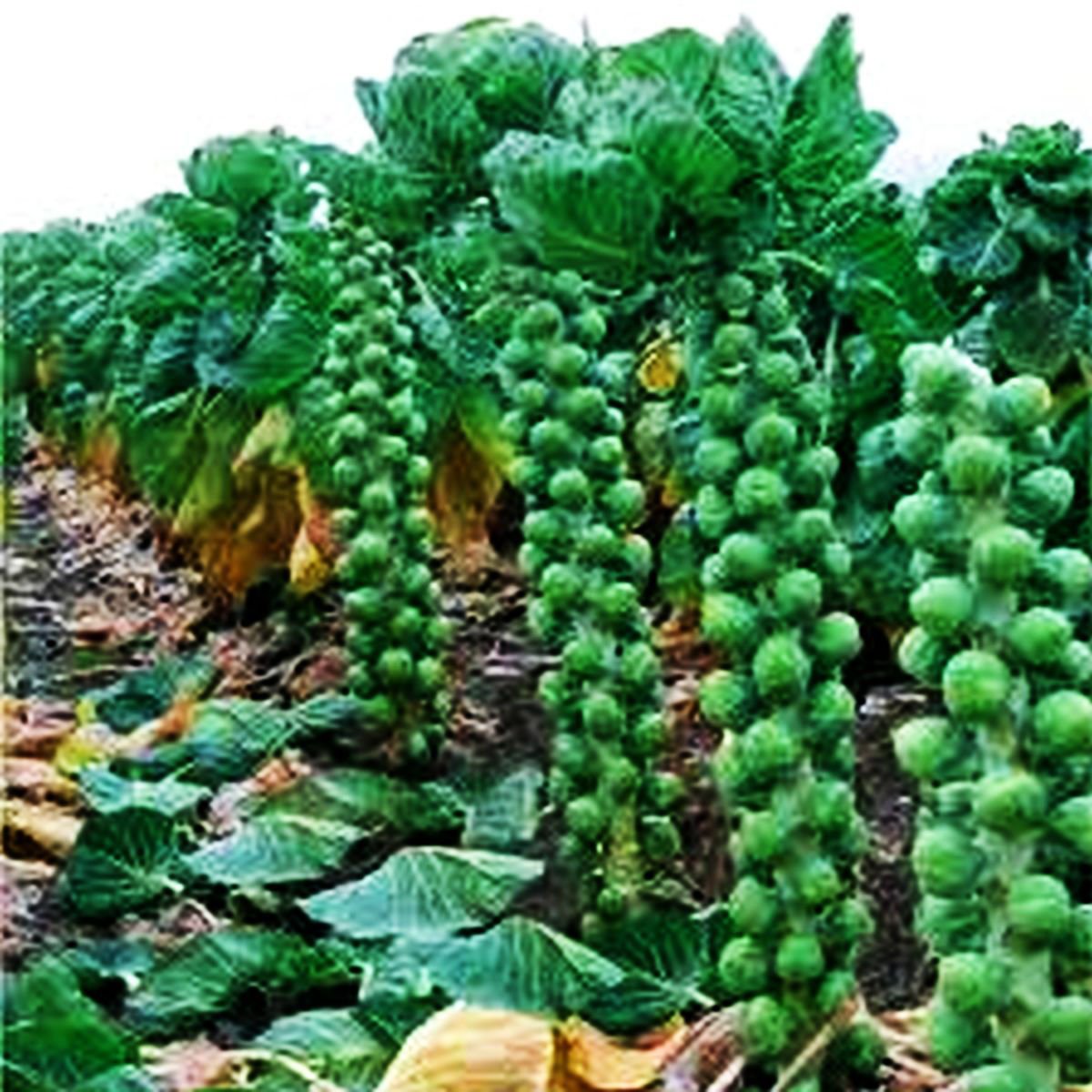
Harvest: After 80 to 90 days of planting, when the tiny heads are green, firm and 1 to 2 inches thickįirst, you’ll need to decide which variety to grow based on your goals and needs.Common Problems: Flea beetles, aphids, clubroot, downy mildew, cabbage root maggots, white mold, cutworms, thrips, leafminers, bolting.Fertilizing: Apply nitrogen fertilizer every 2 to 3 weeks after transplanting.Watering: Water thoroughly during transplanting, 1 to 2 inches per week during dry weather.Worst Companions: Pole beans, strawberry, kohlrabi, lettuce.Best Companions: Onion, corn, potato, celery, dill, peppermint, rosemary, sage, chamomile, peas, tomato, bush beans, spinach, garlic.Spacing: 2 to 3 inches between plants and 2 to 3 feet between rows.Transplant Outdoors: When seedlings are 3 inches tall.Hardening Off: 7 to 10 days before transplanting.Start Indoors (in fall): 12 to 16 weeks before the first frost date.Start Indoors: 6 to 8 weeks before the last frost date.
BRUSSEL SPROUT PLANT FULL
Sun Exposure: Full sun, at least 6 hours per day.Soil: Loam, Sandy, Clay, PH between 6.5 to 7.0, fertile, well-drained.If you’ve also struggled to get this plant to take off, or if you want to take a stab at it for the first time, this guide will give you everything you need to know to make the veggie thrive in your garden. I finally nailed the trick, though, and now we have Brussel sprouts from the garden all the time. The ideal cool temperatures don’t last too long, so planting at the right moment is crucial. Our summers are hot-hot-hot, and our winters are freezing. In my current garden, where full sun is available nearly everywhere, it’s actually a bit tougher to grow cool-season crops. Thankfully, the constant partial shade kept the area cool, which the Brussel sprout plant loves. Growth for all my plants was slow, including sprouts. The reason? I was growing in a garden that was semi-shaded and never in full sun. I’ve grown Brussel sprouts a few times and managed to get some sprouts for harvest, but often they were tiny. The Brussel sprout plant is not the easiest plant to grow, but it’s worth the effort. Watching the little heads mature into the familiar balls is extremely rewarding. While they’re delicious from the store, there’s something so much better about growing Brussel sprouts in your own garden.

You may also be interested in Suttons Brussels sprout seeds.Roasted, fried, microwaved or boiled, just the thought of the nutty, cabbage-like flavor of Brussel sprouts has my mouth watering. They’re high in many nutrients, especially fibre and vitamins K and C. Nothing taste as good as home grown Brussels sprouts! Brussels sprouts nutritional informationĭepending on how they’re cooked, sprouts are often one of the lower-calorie side dishes in a winter food spread. When all the sprouts have been picked, cut off the cabbagy tops and steam them.
:max_bytes(150000):strip_icc()/growing-brussels-sprouts-1403442-04-a01389c1755d49a6a1bd758340ea205a.jpg)
Make a delicious side dish by steaming for about 6 minutes, then tossing in butter or olive oil.Ĭreamed sprouts with chestnuts or steamed sprouts with lemon and garlic are also a joy to eat. Also remove any yellowing leaves to encourage air circulation and reduce the risk of disease. Remove only a few sprouts at a time from each stem. Start at the base of the stem, working upwards. Begin picking when the sprouts are the size of a walnut and the leaves are tightly closed. However, taste tests have not proved this and many newer varieties are designed to crop from September onwards. Tradition states that sprouts should not be harvested until after the first frost.

Some of the taller varieties will need supports. Plant brussels sprouts outside from mid-May to early June. This will prevent any damage caused by windrock. In exposed sites, it may be an idea to stake the taller varieties. Once the plants mature this should no longer be necessary.Īs autumn approaches, earth up around the stems. In dry weather, water young plants regularly. Hoe regularly between plants so that they do not need to compete with weeds for nutrients and moisture. Caterpillars and aphids are also rather partial and so will need to be controlled. Please take care of netting to make sure that birds cannot be trapped. People may sometimes have an issue with sprouts, but birds don’t and you may need to protect your crop from pigeons using plant protection. When planting the soil must be firm and fertile and the position needs to be sunny and open yet sheltered from high winds. Brussels are part of the cabbage family Where to grow Brussels sprouts European cultivation began in Belgium around the 13th century and spread throughout Northern Europe.


 0 kommentar(er)
0 kommentar(er)
